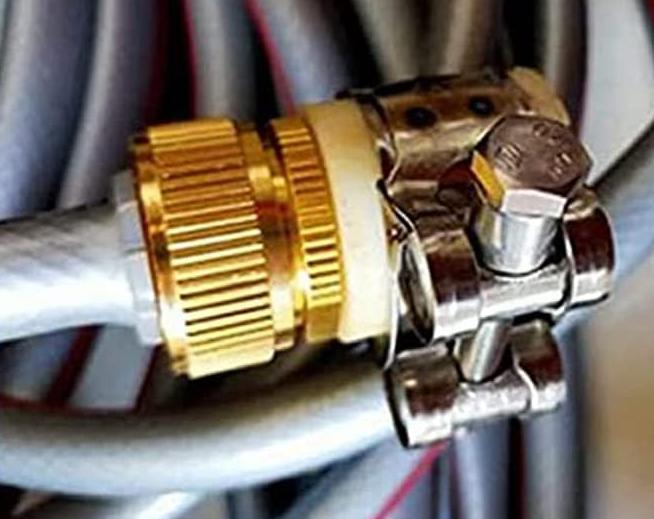- Phone:+86-17331948172 +86-0319-8862898
- E-mail: inquiry@puxingclamp.com
अक्ट . 21, 2024 20:15 Back to list
Transmission Cooler Hose Clamp Options and Installation Tips for Optimal Performance
Understanding Transmission Cooler Hose Clamps Importance and Applications
When it comes to maintaining the efficiency and longevity of a vehicle’s transmission system, particularly in automatic transmission models, transmission cooler hose clamps play a crucial role. These unassuming yet essential components are responsible for securing hoses that transfer coolant to and from the transmission cooler, preventing leaks and ensuring optimal operation. This article delves into the significance of transmission cooler hose clamps, their types, installation, and maintenance tips.
What Are Transmission Cooler Hose Clamps?
Transmission cooler hose clamps are specialized fasteners designed to hold flexible hoses tightly against the transmission cooler, which is responsible for regulating the temperature of the transmission fluid. The transmission cooler uses either air or coolant to dissipate heat generated in the transmission system. If the hoses connected to the cooler are not properly secured, leaks can occur, leading to fluid loss and potential overheating of the transmission.
Importance of Transmission Cooler Hose Clamps
1. Leak Prevention The primary purpose of hose clamps is to maintain a secure connection that prevents fluid leaks. Transmission fluid is vital for lubricating various components and transferring power. Any leaks can significantly reduce fluid levels, leading to increased friction, overheating, and, ultimately, transmission failure.
2. Temperature Regulation Ensuring that the transmission cooler operates effectively involves maintaining proper fluid flow. Hose clamps keep the hoses tightly sealed, allowing for efficient heat transfer. Overheating can warp internal components, necessitating costly repairs.
3. System Integrity A properly secured transmission cooler system contributes to the overall integrity of the vehicle's drivetrain. Failures in the transmission system can lead to poor vehicle performance, reduced fuel efficiency, and expensive repairs.
Types of Transmission Cooler Hose Clamps
There are several types of hose clamps used in automotive applications, but the most common types for transmission cooler hoses are
1. Spring Clamps These clamps grip tightly due to their spring action, providing a consistent hold even under varying pressures. They are often made of stainless steel, offering resistance to corrosion.
2. Screw Type Clamps These clamps have a threaded screw that tightens the clamp around the hose. They are adjustable and can provide a very tight fit, making them versatile for various hose sizes.
3. T-Bolt Clamps Ideal for high-pressure applications, T-bolt clamps use a bolt and a nut to provide a secure connection. They are particularly popular in performance vehicles where high fluid pressures can cause standard clamps to fail.
Installation of Transmission Cooler Hose Clamps
transmission cooler hose clamps

Installing transmission cooler hose clamps is a straightforward process that can be done with minimal tools
. Here’s a basic guide1. Preparation Before installation, ensure that the engine is off and cooled down. This prevents burns and makes handling hoses easier.
2. Positioning Slide the hose over the fitting of the transmission cooler, ensuring a snug fit. The hose should engage properly with the fitting without gaps.
3. Clamp Placement Position the hose clamp over the end of the hose, ensuring it covers the area where the hose meets the fitting.
4. Securing For screw-type clamps, tighten the screw using a socket or screwdriver until the clamp is secure but not overly tight, which could damage the hose. For spring clamps, ensure the clamp is in place and seated correctly.
5. Final Check After installation, start the vehicle and check for any signs of leaks. Observe the connections while the transmission fluid circulates to ensure everything is functioning correctly.
Maintenance Tips
Regular maintenance can extend the life of transmission cooler hose clamps and prevent overheating issues. Here are some tips
- Visual Inspections Periodically check the clamps for signs of wear, rust, or corrosion. Replace any that look compromised.
- Tightness Checks Occasionally, check the tightness of the clamps, especially if you notice any fluid leaks or if the vehicle has undergone significant temperature changes.
- Hose Condition Inspect the hoses regularly for cracks, bulging, or hardening, which could indicate a need for replacement.
Conclusion
Transmission cooler hose clamps might seem like small components in the vast machinery of a vehicle, but their role is significant in maintaining the transmission's integrity and performance. By understanding their importance, types, installation process, and maintenance, vehicle owners can take proactive steps to ensure a smoother and more efficient driving experience. Always remember that a well-maintained transmission system is key to prolonging the life of your vehicle.
-
Premium 201 Stainless Steel Strip - Durable & Cost-Effective
NewsAug.23,2025
-
Precision High Quality Stainless Steel Strip Coils & Rolls
NewsAug.22,2025
-
Durable Adjustable Hose Clamps for Pipes & Radiators
NewsAug.21,2025
-
Heavy Duty Hose Clamps: Premium Stainless Steel & Adjustable
NewsAug.19,2025
-
Large Stainless Steel Adjustable American Type Hose Clamp - Hebei Pux Alloy Technology Co., Ltd
NewsAug.18,2025
-
Large Stainless Steel Adjustable Hose Clamp - Hebei Pux Alloy|Durable Corrosion Resistance&Adjustable Design
NewsAug.18,2025




